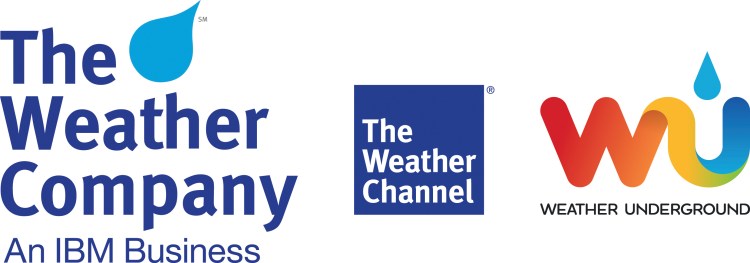Since its founding in 1982, The Weather Channel (TWC) has counted on people’s innate, if not intense, need to know the weather, delivering forecasts across each new platform as it emerged: from cable TV to the Web to apps. This spring, TWC has set out to further advance how we interact with weather forecasts.
In April the company released a bot on Kik and today, the company released a “How’s your weather?” interactive bubble on the nascent Cola mobile messaging platform. These measures provide a glimpse at the differences between chatbots and SMS, and may also hint at new forms of interactive communication where a broad range of information is dynamically pulled into our everyday conversations. Think sunny and breezy, with a strong chance of interactivity.
Imagine you’re planning a camping trip to Yosemite for the second week of June. Naturally, you’ll want to know the weather. That’s where TWC’s bot comes in. You ask for the forecast and the bot replies “Rain.”
Now, imagine you’re planning this trip with three friends and not only do each of you want to know the forecast, but you’ll also need to discuss with them whether to the reschedule the trip to the first or third week of June (sunny). That’s where TWC’s “How’s your weather?” Cola bubble comes in.
Cola’s “bubbles” are essentially interactive applets that appear within a texting conversation and can pull in information and functionality from apps already on your phone. These bubbles shorten group texting conversations and eliminate the need to toggle between say, your messaging app, calendar app, and in this case, the Weather Channel app.

Above: The “How’s your weather?” Cola bubble from The Weather Channel
Of the Kik bot and Cola bubble, Domenic Venuto, general manager of TWC’s Consumer Division, explains, “We tailor the weather experience to each platform. On Cola you’re engaging with it.” He adds, “Our strategy is to be where our users are. Weather touches everyone.” (Kik has 275 million registered users, while Cola is only two months old and declined to share usage information.)
Cola CEO David Temkin says that the TWC bot and bubble “share one thing in common. They both extend messaging so you can pull more functionality into messaging.”
For Cola, TWC represents the first third party to develop a bubble on the fledgling OS messaging platform. Launched in March for the iPhone, Cola has already developed six bubbles for tasks like scheduling, to-do lists, and location, and aims to release an SDK within three months. Without revealing names, Temkin says Cola is actively working with a “small number” of other companies to develop third-party bubbles for social and business use cases.
In its first two months, Cola has observed that its users most often use the group texting feature, where there’s a network effect akin to Metcalfe’s Law . “We see a lot of group conversations where you’re making decisions and putting things on a calendar,” Temkin says. “The value of our bubbles increase as the number of users participating in the texting conversation increases.”
Further, of the two or three messaging apps people typically have on their phones, Temkin describes how many of their early users are using Cola not only for group texting, but for group texting with a single purpose. He cites conversations around all aspects of weddings, the planning and execution of church fundraisers, and regularly scheduled events like a weekly cycling group ride.
For the ecosystem of developers, brands, platforms, and investors forming around bots, TWC’s embrace of bots and SMS reveals a key difference between the two technologies. When it comes to the weather, a bot is great for simply checking the forecast, but a Cola bubble is better suited to share that forecast with others and to engage with it. Yet it’s not as simple as whether one — conversing with a machine via a bot or conversing with a group of people — is better than the other.
“We’re not favoring one platform over the other,” Venuto says. “This is part of a concerted strategy, fundamentally, to help consumers make better decisions.”
 For his part, Temkin doesn’t see it as a bot versus messaging app contest, either. “In many ways, they’re complementary,” Temkin says. “I can envision an app that could do both bots and bubbles.”
For his part, Temkin doesn’t see it as a bot versus messaging app contest, either. “In many ways, they’re complementary,” Temkin says. “I can envision an app that could do both bots and bubbles.”
TWC, which was acquired recently by IBM and will incorporate the deep-learning capabilities of Watson, is likely considering that and more. Watson would further distinguish TWC from the likes of Yahoo Weather, AccuWeather, and, perhaps most importantly, Poncho, a weather bot featured at Facebook’s F8 conference. Without revealing any specifics, Venuto says that TWC intends to push forward the boundaries for messaging. Watson will provide TWC with learning, reasoning, and natural language processing capabilities for complex, human language interactions.
Instead of merely having a bot pull functionality from an app or having a Cola bubble eliminate the need to toggle between messaging and calendaring apps, it’s easy to imagine communication where a platform enriches the conversation intuitively, drawing in materials like maps, recipes, or personal videos based on what people are saying. “In the next three to five years, you’ll see more dynamic assembly of content in communications and new, dynamic experiences on the fly,” Venuto says.


